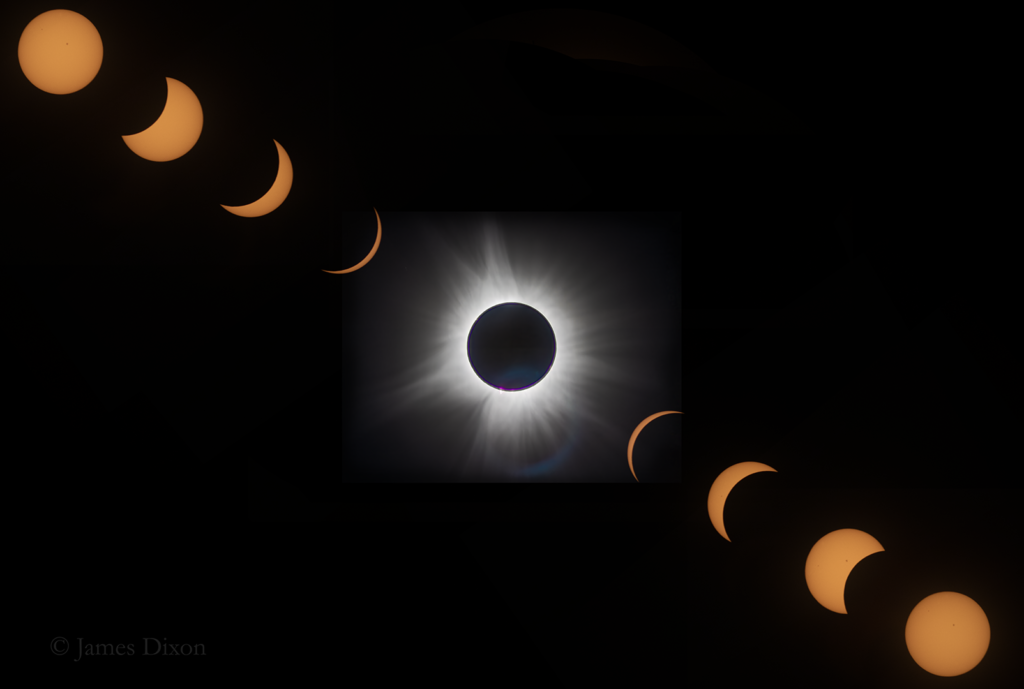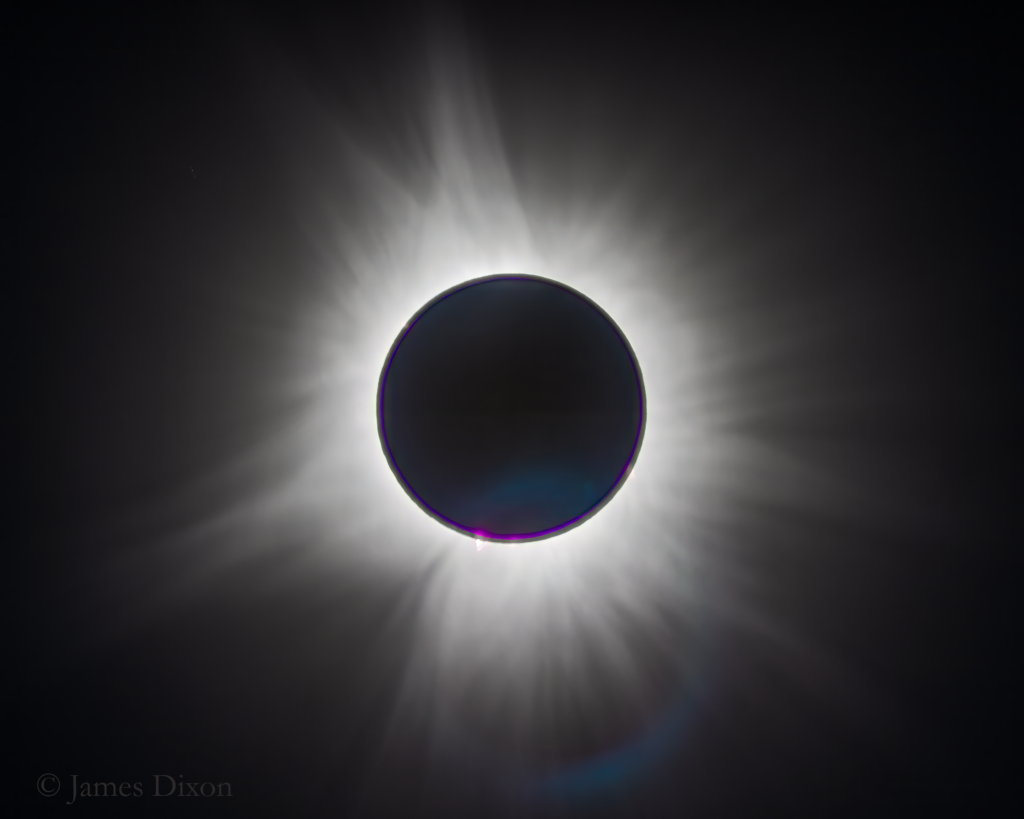
Here we have a composite showing various phases of the partial eclipse with totality. Canon T8i with an old 400mm lens at ISO 800.

Well, I didn’t get rained out this time though I did worry about the clouds for a while. This is my first processed result. A combination of various exposures during totality.
It was amazing though hectic. I planned to use my laptop to run everything but after multiple tests and trials, the laptop and camera wouldn’t communicate today. So once totality started, I used exposure bracketing and went “up and down the dial” to get exposures from 1/2000s to 1 second. The latter was unusable but I wanted to be sure.
Note the prominence at the bottom. It was clearly visible to the naked eye.
I’ve got more pictures and will try to make something of them in the coming days.